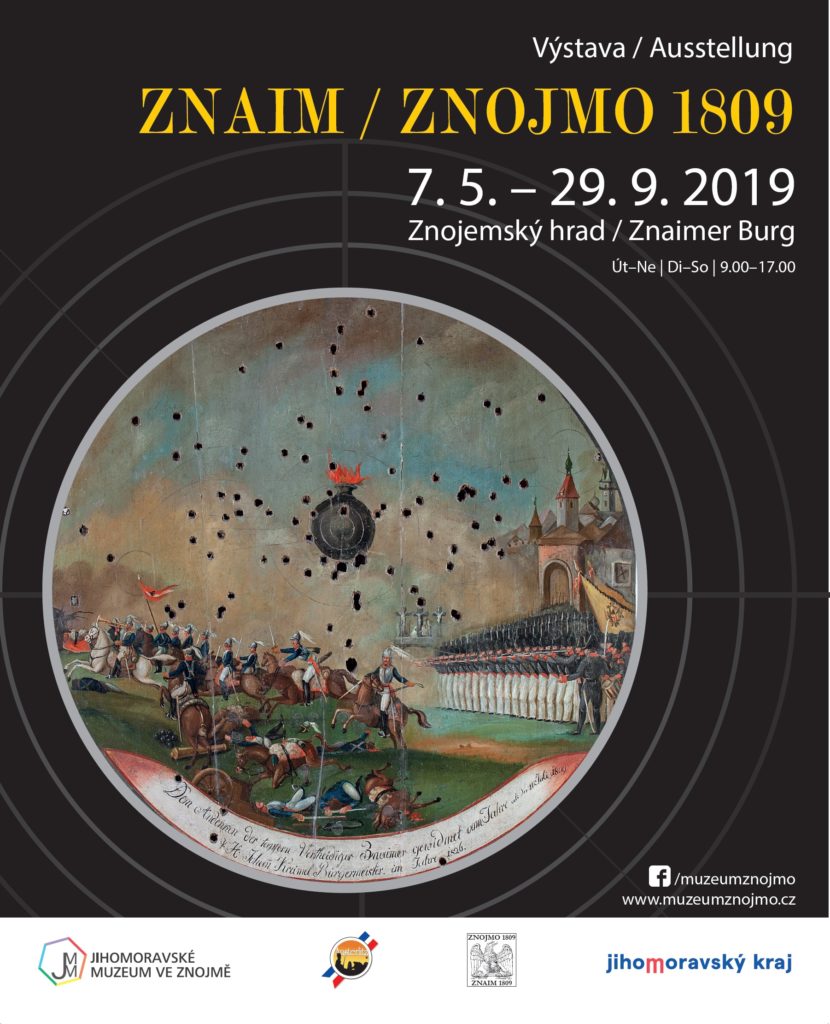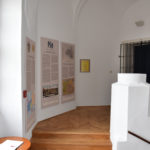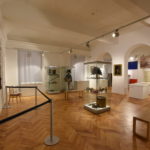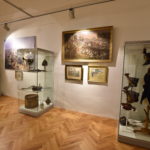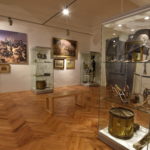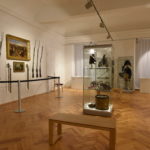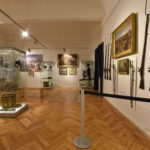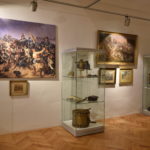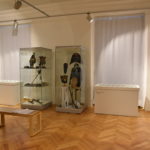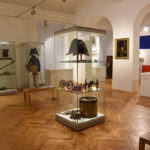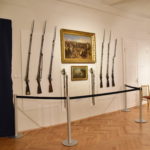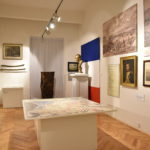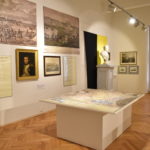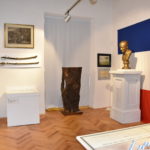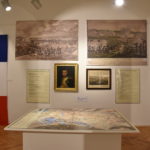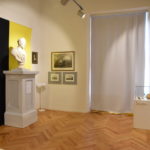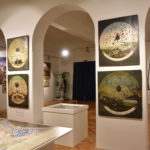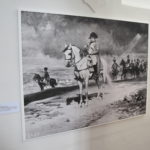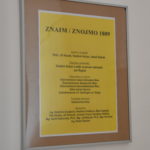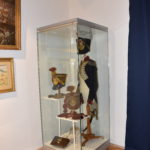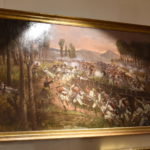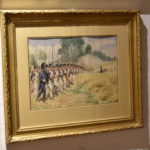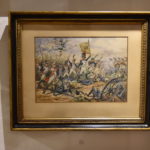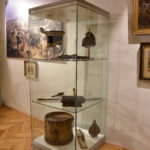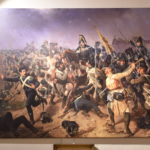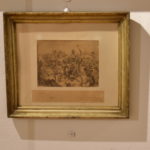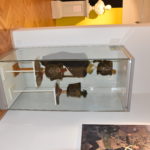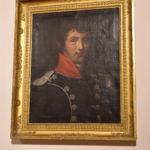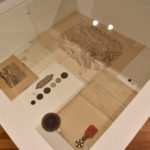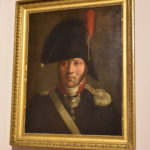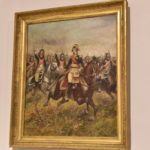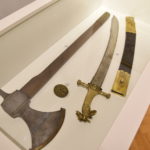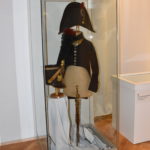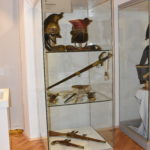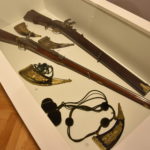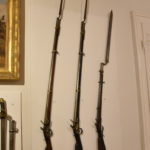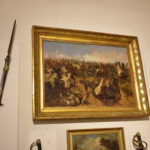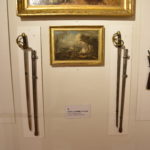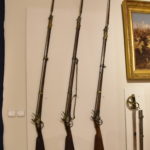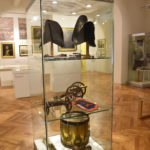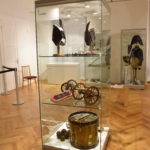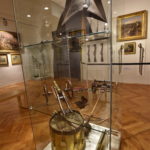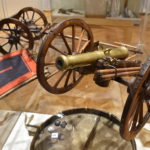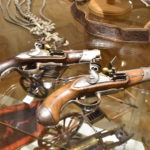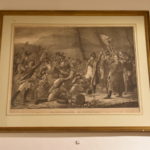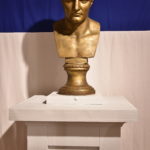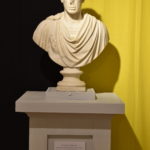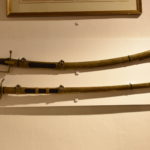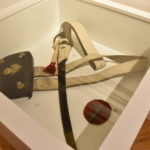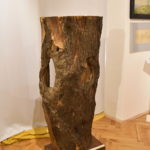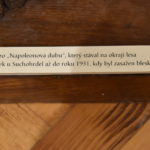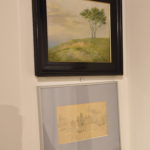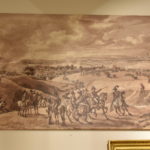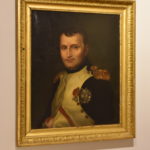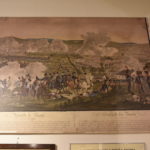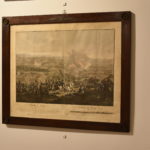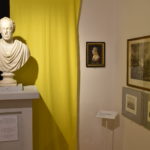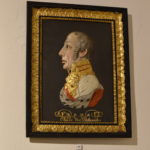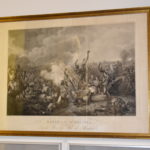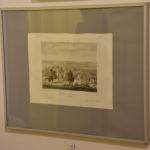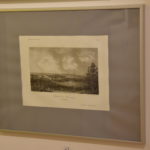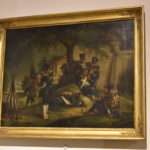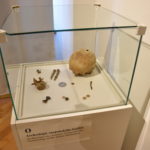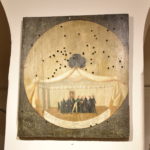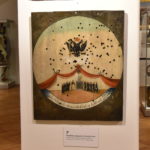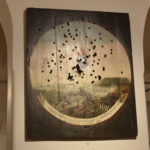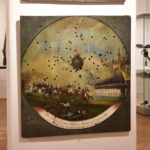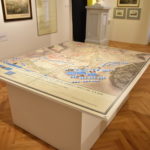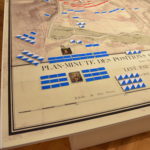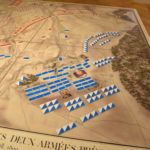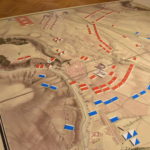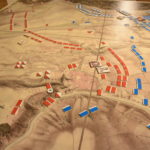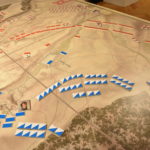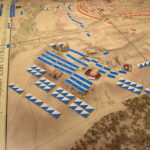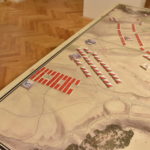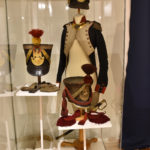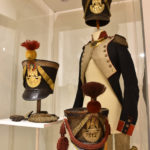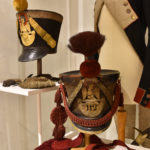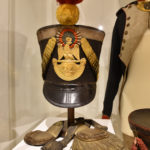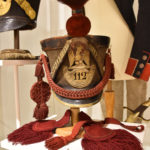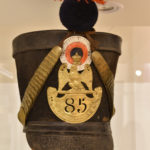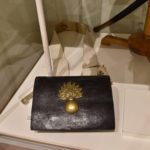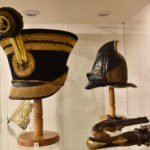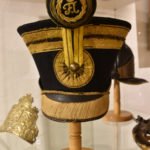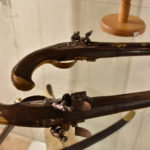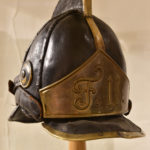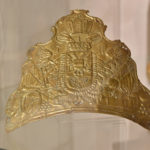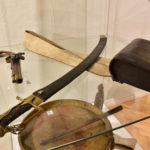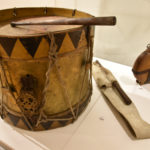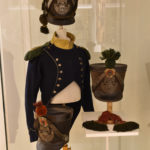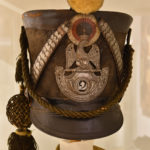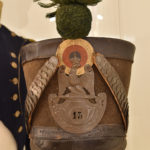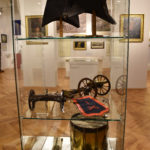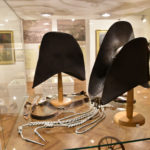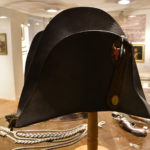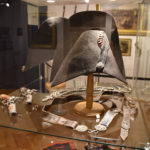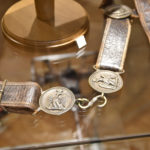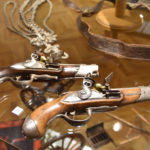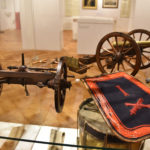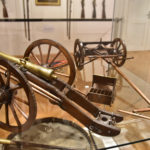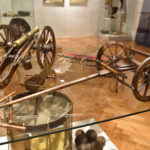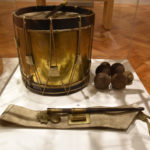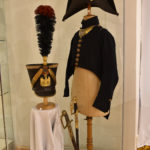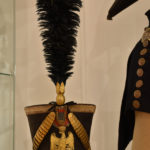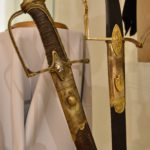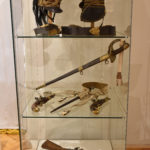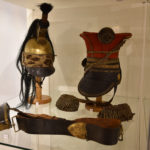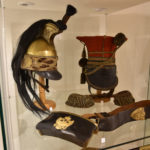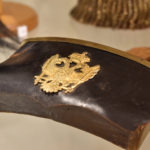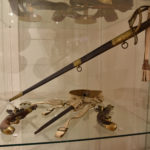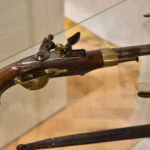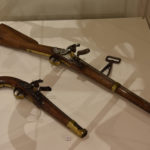The South Moravian Museum in Znojmo, on the occasion of the 210th anniversary of the Battle of Znaim (10th-11th July 1809), the last decisive victory of Emperor Napoleon and the last battle of Archduke Charles’s military career, offers a unique exhibition.
From 7th May to 29th September, at the Znojmo Castle, you have the opportunity to visit a hall with many dozens of unique authentic items through which you will be attracted by the Napoleonic Wars, in a way that will be appreciated by both experts and the general public. Experts because the very rare exhibits from private collections cannot be studies every day; the public for the simple reason that the Napoleonic military is fundamentally by its expression colorful, of tasteful forms, and attractive by the fascinating life stories associated with it.
The exhibition is prepared in several thematic axes and culminates in a symbolic encounter with the victorious Emperor Napoleon and the defeated Emperor Francis. Showcases present the infantry, cavalry, artillery and other arms of the participating armies. In addition to the basic standard weapons of the troops of the line, you will discover the edged weapons and firearms of Napoleon’s Guard and some very special weapons of the Austrian infantry used during the Coalition Wars. Original headgears are among the most attractive exhibits. And what about more than two centuries-old uniforms, including accessories and equipment? One of the stories that the exhibition brings is dedicated to the role of Chief of Staff of the French 4th Corps, General Fririon. Do you know who the French infantry sappers were? You will see their heavy carpenter’s ax. And don’t miss their huge sword.
The exhibition is complemented by a large number of paintings selected either for the thematic relationship to the 1809 war, or more generally for their value related to the exhibits. They will help you create a complete picture of the warfare of the 18th and 19th century armies. On some you will find the town of Znojmo in the background.
The exhibition does not celebrate the war or the winner of the battle. Our goal is to commemorate the event that marked the town, the country and all of Europe, and its protagonists – our ancestors. And in the field of military history, our ambition is to contribute to make the Battle of Znaim join symbolically the other great battles of the epoch, enter among such famous names as Marengo, Austerlitz, Jena, Friedland, Wagram or Borodino. It is unjustly neglected by the world history. The war of 1809 ends only at Znaim, not at Wagram, not at the Moravian Field. The complicated and rapid movements of the vast army formations culminate in a two-day collision in a difficult terrain, and as a whole the battle and the conclusion of the campaign belong among the most interesting chapters of the Napoleonic Wars. The main reason for being neglected? Napoleon only contributed to the battle during the second day. He didn’t decide on the battle site, nor time. The last decisive victory of his career was won by General Marmont and Marshal Massena.
The authors and curators of the exhibition are Vladimír Kočan and Jakub Samek with the support of the military-historical section of the Central European Napoleonic Society and the historian of the South Moravian Museum Jiří Kacetl. The exhibition is accompanied by a book of the same name.
Photos by Rostislav Hetflaiš.
I.
In the 20 years’ period following the 1789 Revolution, France was almost permanently at war with its European competitors. During four wars with anti-French coalitions, Napoleon Bonaparte, in 1804 the self-proclaimed “Emperor of the French”, was able to dominate most of the continent. Only Great Britain, whose army and navy fought against the French occupation of Spain, and Austria, in which the yearning for revenge smouldered for the defeat of Austerlitz in 1805, remained a potential danger for France. In 1809, the Danube Monarchy became a key member of the Fifth Coalition. The war began in early April 1809 with the hopeful advance of the Austrian armies to Lombardy, Poland and especially Bavaria. However, the considerable caution of the Generalissimo of the Austrian army, Archduke Charles, brother of the Emperor, led to the loss of initial advantages and the first defeats as opposed to Napoleon’s energetic leadership. The Austrians had to withdraw from Bavaria and Italy and move back as quickly as possible to Vienna. The enemy, however, was faster, and thus, in mid-May, the capital of the monarchy surrendered to Napoleon. For the second time already. In the battle of Aspern and Essling, within sight of Vienna, Archduke Charles was able to defeat Napoleon, for the first time across the board, but he did not use the advantages he gained and left the occupiers for over a month to gather their strength. At the beginning of July, Napoleon began to move his large army from Vienna to the left bank of the Danube. At Deutsch-Wagram, there was a bloody battle in which Napoleon restored his reputation. The Austrian withdrawal from the battlefield in the direction of Moravia (Znojmo and Mikulov) was, however, carried out so well that the war continued.
II.
The final confrontation took place near the city of Znaim / Znojmo in the south of Moravia. The battle was conducted somehow or rather while on the march: the Austrian army kept retreatingtowards MoravskéBudějovice even during the fighting. Archduke Charles did not want another bloodshed similar to Wagram’s, so he did not dare to launch a major counteroffensive as the two-day battle dragged on. Not even at the beginning when the French were in significant numerical disadvantage. On the other hand, Emperor Napoleon knew that a further prolongation of the war would not benefit him, either. The battle was, therefore, interrupted by the twilight of the second day as the ceasefire negotiations in the “Red Farmstead” in Suchohrdly began. The truce was signed on the morning of 12thJuly and related not only to the situation before Znojmo, but also to the secondary battle scenes in Galicia, Saxony and Tyrol. Both the Circles (districts) of Znojmo and Brno were separated from Moravia and occupied by the French army until the Schönbrunn Peace Treaty was sealed.
III.
The towns and communities where the war immediately passed through and where subsequently enemy divisions were stationed suffered hardest. Although the conclusion of the Znojmo armistice limited further unbridled robbery and violence against the civilian population, the French occupation administration imposed hard-to-fulfil demands on the entire Circle of Znojmo. Any non-fulfilment was punished with violent executions. The French did not hesitate to transfer the burden directly to the owners of the dominions from the ranks of the nobility and the clergy. In everyday contact with French soldiers, there were, however, no major excesses. Expressions of discontent of the local population were confined to a hidden boycott of requisitions, i. e. passivity and delay of deliveries. On the other hand, we know of many cases in which local merchants came to great profit thanks to the increased demand from the French occupiers.The complete exhaustion of the Znojmo region after the withdrawal of the French army at the beginning of November 1809 resulted in an economic and social stagnation of South Moravia for another two decades.
Description of the exhibits
Front Hall – behind the entrance on the left
A: Firearms and Edged Weaponry
1. French musket for Grenadiers of the Imperial Guard, model 1777 / An 9, with bayonet
2. French infantry musket, model 1777 / An 9, with bayonet
3. French dragoon musket, model 1777 / An 9, for voltigeurs, with bayonet
4. Austrian infantry musket, model 1798, with bayonet
5. Austrian infantry musket, model 1807, with bayonet
6. Austrian Jäger rifle (“stutzen”), model 1795, including bayonet
7. French Cuirassier sword, model An 9
8. French Cuirassier sword, model An 11
Pictures
9. Attack of the Austrian cavalry at the Battle of Fère-Champenoise (Champagne) on 25th March 25, 1814, five days before the conquest of Paris. Oil, Fritz Neumann (1900).
10. Attack of the Austro-Bavarian cavalry against the French Grand Battery at the Battle of Hanau (Hesse) on 31stOctober 1813 and counterattack of the Nansouty Guard Cavalry. After thatNapoleon managed to withdraw his troops to the territory of France. Oil copy after Horace Vernet (1824)
Wall with two windows
B: Austrian Light Infantry
11. Double rifle for the Grenzer (frontier infantry) sharpshooters, model 1795
12. Girandoni air rifle, 1795–1801
13.–16. Powder horns for Jäger officers
C: Cavalry
17. Czapka of the Austrian Uhlan Regiment No 3 “Archduke Charles”, 1811; epaulettes of a senior officer, model 1798. The regiment was part of the General-MajorKlebelsberg´s brigade in the 5th Army Corps (General Prince Reuss) and defended the Lower Suburb of Znojmo on 11thJuly 1809.
18.Helmet of the French dragoons, 1804
19. Ammunition case pouch for Austrian Mounted Jägers, 1798-1801
20. French Dragoon sword, model An 11, wrist strap
21. Belt of the French dragoons with bayonet
22. French cavalry pistol, model An 13 (left)
23. French cavalry pistol, model An 9 (right)
24. Austrian cavalry pistol, model 1798
25. Austrian Hussar carbine, model 1798, with hanger
D: Gardeimpériale – Part 1
26. Single-breasted tailcoat (surtout) and hat of a foot grenadier officer of the Old Guard, 1808-1815, with gorget
27. Shako of a chasseur officer of the Young Guard, 1809-1810.
28. Sabre of a foot grenadier officer of the Old Guard (featuring head of the emperor)
29. Sabre for officers of the elite infantry (featuring the imperial eagle)
E: French sappers
30. Sapeur axe of the 60thLine Infantry Regiment from 1809 (part of the 1stBrigade Valentin of the 1stInfantry Division Seras of the 6th Army Corps Grenier)
31. Medusa’s head from a sapeur bandolier, 1801–1815
32. Sapeur sword with scabbard, 1801–1815
Partition wall
Paintings
33. Attack of the French dragoons. Oil, Paul E. L. Perboyre (around 1900)
34. François-Joseph Lefebvre (1755-1820), captain of the 13th Battalionof Light Infantry (1792/1793, stylized). Oil, around 1850. 1804 Marshal of the Empire, in the war of 1809 he was commander of the 7th(Bavarian) Corps in Tyrol.
35. Portrait of an officer of carabiniers of the French 6thRegiment of Light Infantry. Oil, mid-19th century
Q: Documents, Medals and Money
36. Memo by General Fririon, Chief of Staff of Masséna´s 4thCorps, on the transfer of the Austrian soldiers from Znojmo military hospitals in July and August 1809
37. Cross of the French Legion of Honour, 3rdtype, 1808–1811
38. French officer cockade
39. Small Austrian medal commemorating Archduke Charles in Znojmo in 1809
40. Related to the French occupation of Znojmo: Instruction of the French Intendant for the Znojmo CircleGirod de Vienney, Baron of Trémont, dated 30thSeptember 1809, that the French soldiers should not requisition horses of Moravian millers.
41.Austrian kreutzer-coinsvalid in the year 1809
Wall back to the entrance
G: French Light Infantry
42. Tailcoat of a voltigeur of the 12thLight Infantry Regiment, 1810–1812; voltigeur epaulettes; shako of a voltigeur of the 2ndLight Infantry Regiment, 1812. Both of these regiments were deployed in Spain in 1809.
43. Shako of a carabinier of the 6thLight Infantry Regiment, 1812; epaulettes and wrist straps of a carabinier NCO
44. Shako of a chasseur of the 13thLight Infantry Regiment, 1812; chasseur epaulettes. The regiment fought partly in the 1stInfantry Division Morand and partly in Grouchy’s Dragoon Division, both in the 3rdCorps under Marshal Davout.
Paintings
45. Episode from the Battle of Znojmo by Friedrich L’Allemand (1845). Reproduction. Bohemian grenadiers under Lieutenant Colonel Leiningenare pushing the French and Baden (Division Legrand) soldiers onto the vaulted stone bridge in Šaldorf / Schallersdorf during the thunderstorm on 11thJuly 1809 afternoon and manage to capture two French generals. © Austrian Gallery Belvedere
46. An original sketch of the picture above by Friedrich L’Allemand
H: Austrian Line Infantry
47. Shako of a subaltern officer, 1813–1815
48. Fusilier helmet, 1798–1809
49. Plate of a grenadier “bearskin cap”, 1805–1811
50.-51. A pair of double pistols for officers. Around 1800.
52. Officer’s pistol, 1798
53. Cartridge box for infantry, 1798
54. Sabre for officers of Bohemian volunteer divisions
55. Drum, hanging straps, drumsticks
56. Austrian canteen, 1798
Paintings
57. Austrian Major O’Brien and his men are breaking into the French flank in the SchwarzeLackenau, north of Vienna, on 13thMay 1809. Oil, Fritz Neumann (1909)
58. Fighting between French voltigeurs and Austrian grenadiers during the campaign of 1813. Watercolour, E. Gatget (20th century)
59. French infantry line in the Battle of Wagram on July 5, 1809. Watercolour, L. Rousselot (mid-20thcentury)
I: French Line Infantry
60. Tailcoat of an officer of the 85thLine Infantry Regiment, 1806–1812; epaulettes of a captain; gorget; shako of a fusilier of the 85thRegiment, 1812; sabre for officers of the elite companies of the line infantry. The regiment was part of the 3rdBrigade Dupelin of the 3rdInfantry Division Gudinof 3rdCorps Davout.
61. Shako of a grenadier of the 112thLine Infantry Regiment, 1812; grenadier epaulettes and sword-knot
62. Shako of a voltigeur officer of the 24thLine Infantry Regiment, 1812; epaulettes and sword-knot of a captain
63. Cartridge box of grenadiers of line infantry, model 1791; complete with bayonet attachments
In the middle of the hall
J: Varia
64. Hat of an Engineer officer of the Navy, France 1812–1815
65. Hat of an officer of the Guard-Equipage-Train, France 1811–1814, paddock, shoulder cord
66a.-66b. A pair of French Gendarmerie pistols, model An 9
67. Model of the French 4-pound field cannon (Gribeauval system), 1807 (complete with limber and ammunition box)
68. Sabretache of the 1stRegiment of the Mounted Artillery, France
69. Bullets from the Znojmo battle found in the field near StarýŠaldorf / Alt-Schallersdorf
70. French drum, belt with the symbol of a burning grenade (grenadier, artillery), drumsticks
71. Cannon balls from the Znojmo battle found during the construction of the railway near Suchohrdly / Zuckerhandl in 1868
Rear hall–on the left
Painting
72. 5thLine Infantry Regiment joins Napoleon after his return from Elba to Laffrey (Dauphiné) on 7thMarch 1815. Lithograph after the oil painting by C. von Steuben (1818)
K:Guard impériale – Part 2
73. Sabre of a mounted chasseur of the Guard (2ndtype), France 1803
74. Heavy sabre of the mounted grenadiers of the Guard (2ndtype), France 1803
75. Sabre of the foot grenadiers of the Guard with sword-knot and bandolier, 1802–1815
76. Cartridge box of the foot grenadiers of the Guard, 1812–1815. The eagle was replaced by the grenade during the Bourbon Restoration.
77. Bearskin grenade of an officer of the foot grenadiers of the Guard, 1808–1815
L: Emperor Napoleon I
78.Napoleon’s Oak, by which, on Hájek Hill next to Suchohrdly, the Quartier Imperial stood in the Battle of Znojmo. After having been hit by lightning in 1931, the oak – or rather its torso – was deposited in the Znojmo Museum.
79.Napoleon’s Oak near Suchohrdly. Oil painting by M. Nestarowitsch-Goetz (around 1920)
80. Napoleon by Znojmo 1809. Sketch by Znojmo-born painter Alexander Pock (1933)
81. Napoleon I, Emperor of the French and King of Italy. The plaster bust may have decorated the headquarters of the French Occupation Administration in the Daun Palace on the Lower Square in Znojmo.
In the middle
M: Battle of Znojmo
82. Map of the Znojmo surroundings with the location of both armies (battalions) at the time of the truce on 12th July 1809. The underlying map was drawn by Napoleon’s geographers in July 1809.© ÖesterreichischesStaatsarchiv Wien – War Archives
83. View of Dobšiceand Znojmo during the first day of battle on 10thJuly 1809 through the eyes of General Minucci, commander of the Bavarian division in Marmont’s corps. On the left the imperial chaussee to Brno and the bridge over the Kuchařovice / Dobšice Brook, which still stands today. Behind the burning Dobšiceyou can see the fighting in Lehenried and Klosterbruck. Pen and ink drawing by A. Adam. ©Collection of the OpočnoState Chateau
84. Order of battle of the Franco-German army at Znaim 1809 (by Jakub Samek)
85. Portrait of Emperor Napoleon I. Oil painting, early 19thcentury.
86. Napoleon in the Battle of Znojmo (the landscape is illusory). Enlarged reproduction of a copy of the graphic sheet – see No 87.
© ÖNB Vienna: Pk 2598, 159.
87. Napoleon in the Battle of Znojmo (the landscape is illusory). Coloured graphic sheet by J. L. Rugendas, Augsburg (c. 1810). Source for the copy above – see No 86.
88. Order of battle of the Austrian army at Znojmo 1809 (by Karel Sáček)
On the right
N: Imperor Francis I
89. Francis I, Emperor of Austria, King of Hungary and Bohemia, Margrave of Moravia, Duke of Silesia etc. The bust of Carrara marble was donated by the ruler to the municipality of Znojmo for the suffering of the year 1809 in October 1812. Until 1919, this bust decorated the meeting room on the first floor of the Znojmo City Hall (Füttergasse 10). Then it was “cleared away” to the museum depot and damaged by the Czech nationalists in the anti-Austrian hysteria.
90. Emperor Francis I. Cast metal plate (19thcentury)
Paintings
91. Fatal wounding of French Marshal Jean Lannes, Duke of Montebello, at the Battle of Aspern and Essling on 22ndMay 1809. French lithograph after Carle Vernet (19thcentury)
92. Battle of Ober-Hollabrunn on 9thJuly 1809, which preceded the Znojmo battle. French lithograph (19thcentury)
93. Battle of Znojmo on July 10th and 11th, 1809. French lithograph (19thcentury)
94. Rest at the French 53rdLine Infantry Regiment during the campaign of 1812. Oil painting (19thcentury)
O. Archaeology of the Znojmo battlefield
95.Archaeological finds from the mass grave on the edge of the battlefield in Lehenried near StarýŠaldorf(2004)
Partition wall
P. Commemorative Targets
96.Unveiling of His Majesty´s image in the Assembly Room of the Znojmo City Hall on 6thSeptember 1810 and decorating of the two magistrates Karl Emminger and Johann Kreimel and the Znojmo citizen Johann Puchberger with golden medals for their merit during the Battle of Znojmo and the subsequent enemy occupation. Wooden target 1826
97.Unveiling of the bust of Emperor and King Francis I (see No89) in the Znojmo City Hall on 18thOctober 1812 in the presence of Moravian governor Count Lažansky. Wooden target 1826
98. French attack on the “Red Farmstead” (Rothen Hof) at Suchohrdlyon 10thJuly 1809. Wooden target 1826
99.The sortie of the 5thBattalion of the Viennese volunteers and the Moravian Landwehr from the Lower Gate of Znojmo in the late afternoon of 11thJuly 1809, by which the French Cuirassiers (Division Saint-Sulpice) were routed. Wooden target 1826
